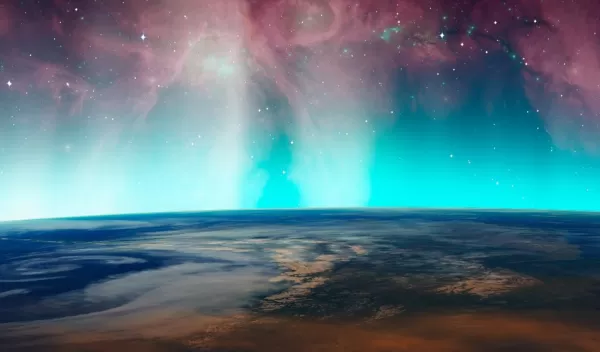
Teams of NSF-supported researchers to increase society's resilience to space weather hazards
The U.S. National Science Foundation has announced its first round of awards under the Grand Challenges in Integrative Geospace Sciences: Advancing National Space Weather Expertise and Research toward Societal Resilience, or ANSWERS, solicitation.
ANSWERS projects will focus on two main research areas -- solar and space physics, and space weather and space climate. These topics are critical to advancing scientific discovery and to protecting the nation's economy and security. Solar and space weather events such as geomagnetic storms pose hazards to satellite communications, navigation systems, electrical power and other aspects of a technology-dependent society.
ANSWERS provides an opportunity for collaboration and a holistic approach to understanding the dynamic, integrated sun-Earth system, as well as the causes of space weather and its effects from "sun to mud." Through ANSWERS, researchers with expertise in solar and geospace observations, modeling, theory, experimentation, computational science and education will work together to address some of the most challenging questions in solar and space physics and space weather.
The new awards will broaden participation in space weather science and education through support of early career researchers and those traditionally underrepresented in STEM, including female scientists, students and other researchers at minority-serving institutions, and those at universities in EPSCoR states.
Research teams will use NSF-funded scientific instruments to meet their goals, including solar telescopes, all-sky imagers, Lidar, radar, magnetometers, experimental plasma physics facilities, and neutron monitors.
"We created ANSWERS to stretch beyond the traditional scope of our long-standing research programs," says Mangala Sharma, program director for space weather in the U.S. National Science Foundation's Division of Atmospheric and Geospace Sciences. "We are striving to increase our understanding of the sun-Earth system and the causes of space weather and its impacts on our planet."
NSF is investing approximately $12 million in seven awards, each of which will advance space weather research, resilience and education. The project teams involve scientists at universities, research institutes, private companies and nonprofit organizations across the country. In addition to increasing resilience to space weather risks, ANSWERS funding will provide training opportunities for an emerging scientific and technical workforce. ANSWERS projects include a significant education or public participation component to increase understanding of the sun-Earth geospace system.
- Impacts of Atmospheric Waves and Geomagnetic Disturbances on Quiet-time and Storm-time Space Weather, led by Xian Lu at Clemson University, will explore the contributions of geomagnetic activity, lower-atmosphere waves and solar irradiance to the variability of space weather during quiet and storm times.
- Prediction of Geoeffective Solar Eruptions, Geomagnetic Indices, and Thermospheric Density Using Machine Learning Methods, led by Xiaoli Bai at Rutgers University, will study and predict geoeffective solar eruptions, geomagnetic indices, neutral density in Earth's thermosphere and its impact on satellite drag.
- Ion-Neutral Coupling in Geospace and its Impact on Space Weather, led by Piyush Mehta at the West Virginia University Research Corporation, will conduct a first-of-its-kind laboratory experiment to gain new insights into ion-neutral coupling and develop a new model of collision frequency for the terrestrial ionosphere.
- Dynamics and Impacts of Electrons and Ions in the Earth's Magnetosphere-Ionosphere System, led by Liang Wang at Princeton University, seeks to enhance models of the integrated magnetosphere-ionosphere-thermosphere system to improve space weather prediction capabilities.
- Understanding and Forecasting Solar Energetic Particles in the Inner Solar System and Earth's Magnetosphere, led by Gang Li at the University of Alabama in Huntsville, will develop a comprehensive model to understand and to forecast solar energetic particles and galactic cosmic rays.
- Solar Energetic Particles, Solar Neutrons, and a New Space Weather Facility in Hawaii, led by Veronica Bindi at the University of Hawai'i, will model differences in solar energetic particle detection for space and ground observations, and redeploy the Haleakala Neutron Monitor station to extend the neutron monitoring network.
- The Satellite Surface Charging Observatory for Prediction, Understanding, Learning, and Industry, led by Adam Kellerman at UCLA, seeks to specify and predict variations in the near-Earth space environment, and to develop an education program and industry tools for spacecraft surface charging.
